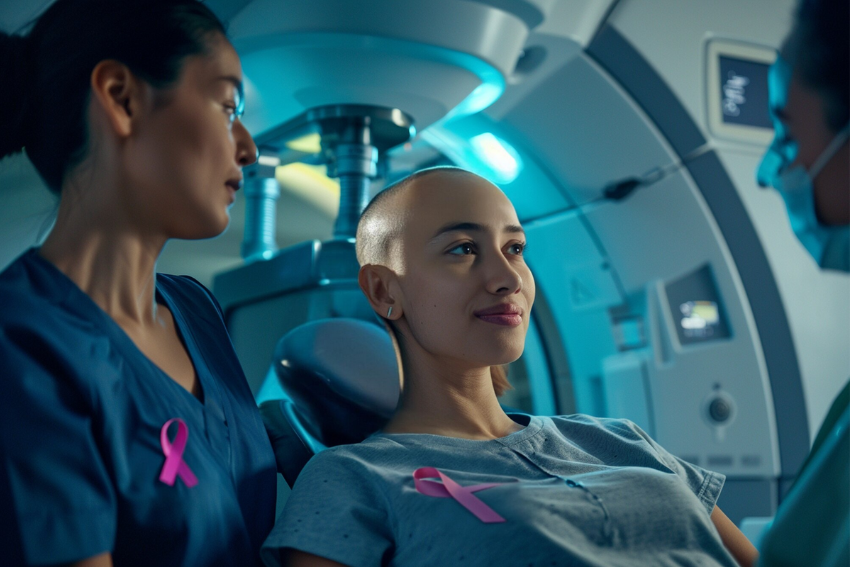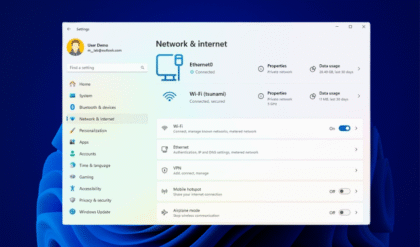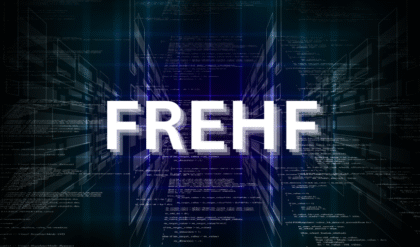Introduction
Early cancer detection is transforming the landscape of medical diagnostics, thanks to the remarkable advancements in artificial intelligence (AI). By leveraging cutting-edge algorithms, machine learning, and vast datasets, AI is enabling healthcare professionals to identify cancer at its earliest stages, significantly improving patient outcomes. This article explores how AI is reshaping cancer detection, its applications, benefits, challenges, and what lies ahead for this life-saving technology.

The Role of AI in Early Cancer Detection
AI’s ability to process and analyze massive amounts of data with precision makes it an invaluable tool in early cancer detection. Unlike traditional methods that rely heavily on human expertise, AI systems can detect subtle patterns in medical images, genetic data, and patient records that might go unnoticed. From breast cancer to lung cancer, AI is being integrated into various diagnostic processes to catch malignancies before they progress.
AI in Medical Imaging
One of the most significant contributions of AI to early cancer detection is in medical imaging. AI-powered tools analyze mammograms, CT scans, MRIs, and X-rays with unprecedented accuracy. For instance, deep learning algorithms can identify abnormalities in breast tissue or lung nodules that are often too small for the human eye to detect. Studies show that AI can match or even outperform radiologists in detecting certain cancers, such as breast cancer, with sensitivity rates exceeding 90%.
Predictive Analytics and Risk Assessment
AI doesn’t just stop at imaging. It also plays a crucial role in predictive analytics by assessing a patient’s risk of developing cancer. By analyzing electronic health records (EHRs), genetic profiles, and lifestyle factors, AI models can identify individuals at high risk for cancers like colorectal or pancreatic cancer. These insights allow doctors to recommend preventive measures or early screenings, catching cancer before symptoms appear.
Pathology and Biopsy Analysis
AI is also transforming pathology by automating the analysis of tissue samples. Machine learning algorithms can examine biopsy slides to detect cancerous cells with high precision, reducing human error and speeding up the diagnostic process. For example, AI tools have shown promise in identifying prostate cancer cells in biopsy samples, enabling pathologists to focus on complex cases while improving turnaround times.
Benefits of AI in Early Cancer Detection
The integration of AI into early cancer detection offers several advantages that are revolutionizing oncology:
- Improved Accuracy: AI reduces false positives and negatives, ensuring more reliable diagnoses. For instance, Google’s DeepMind AI has demonstrated a 11.5% reduction in false negatives for breast cancer screenings compared to traditional methods.
- Speed and Efficiency: AI can process thousands of images or data points in seconds, enabling faster diagnoses and reducing patient wait times.
- Cost-Effectiveness: By streamlining diagnostics and reducing unnecessary procedures, AI can lower healthcare costs for both patients and providers.
- Personalized Screening: AI tailors screening recommendations based on individual risk factors, making early cancer detection more precise and effective.
- Accessibility: AI-powered tools can be deployed in underserved areas, where access to skilled radiologists or pathologists may be limited, democratizing early cancer detection.
Real-World Applications of AI in Cancer Detection
AI is already making a tangible impact in the fight against cancer. Here are some notable examples:
- Breast Cancer: Tools like IBM Watson and Google’s AI algorithms analyze mammograms to detect early signs of breast cancer, improving survival rates by identifying tumors at stage 1 or 2.
- Lung Cancer: AI systems, such as those developed by Stanford University, analyze low-dose CT scans to detect lung cancer with accuracy rates comparable to expert radiologists.
- Skin Cancer: Smartphone apps powered by AI, like SkinVision, allow users to photograph skin lesions and receive risk assessments for melanoma, encouraging early medical consultations.
- Colorectal Cancer: AI models analyze colonoscopy images to identify precancerous polyps, enabling early intervention and reducing cancer risk.
Challenges and Limitations
While AI holds immense promise for early cancer detection, it’s not without challenges:
- Data Quality and Bias: AI models rely on high-quality, diverse datasets. If training data is biased or incomplete, it can lead to inaccurate predictions, particularly for underrepresented populations.
- Regulatory Hurdles: AI tools must undergo rigorous regulatory approval (e.g., FDA clearance) to ensure safety and efficacy, which can delay deployment.
- Integration into Workflow: Incorporating AI into existing healthcare systems requires training for medical professionals and infrastructure upgrades, which can be costly and time-consuming.
- Ethical Concerns: Issues like patient privacy, data security, and over-reliance on AI raise ethical questions that need careful consideration.
The Future of AI in Cancer Detection
The future of AI in early cancer detection is bright, with ongoing advancements poised to make diagnostics even more precise and accessible. Emerging technologies like liquid biopsies, which detect cancer DNA in blood samples, are being enhanced by AI to identify cancers at their earliest stages. Additionally, multimodal AI systems that combine imaging, genetic, and clinical data are expected to provide a more holistic approach to diagnosis.
Researchers are also exploring AI’s potential in predicting cancer recurrence and tailoring personalized treatment plans. As AI continues to evolve, its integration with wearable devices and telemedicine could further democratize early cancer detection, allowing patients to monitor their health in real-time.
Conclusion
AI is revolutionizing early cancer detection by enhancing diagnostic accuracy, speeding up processes, and making screenings more accessible. From analyzing medical images to predicting cancer risk, AI is empowering healthcare professionals to catch cancer at its most treatable stages. While challenges like data bias and regulatory hurdles remain, the future of AI in oncology is promising, with the potential to save countless lives through timely and precise interventions. As technology advances, AI will continue to play a pivotal role in the global fight against cancer, bringing hope to patients and providers alike.
FAQs About AI in Early Cancer Detection
How accurate is AI in detecting cancer?
AI has shown high accuracy in detecting various cancers, often matching or surpassing human experts. For example, AI tools for breast cancer detection have achieved sensitivity rates above 90%, though accuracy depends on the quality of training data and the specific cancer type.
Can AI replace doctors in cancer diagnosis?
No, AI is designed to assist, not replace, doctors. It enhances diagnostic accuracy and efficiency, but human expertise is still crucial for interpreting results and making treatment decisions.
Is AI-based cancer detection safe?
AI tools used in cancer detection undergo strict regulatory scrutiny to ensure safety and reliability. However, ongoing monitoring is necessary to address potential biases or errors.
How does AI improve cancer screening accessibility?
AI can analyze medical images and data in areas with limited access to specialists, enabling remote diagnostics and expanding screening programs to underserved populations.
What types of cancer can AI detect?
AI is currently used to detect cancers like breast, lung, skin, colorectal, prostate, and more. Its applications are expanding as research progresses.





